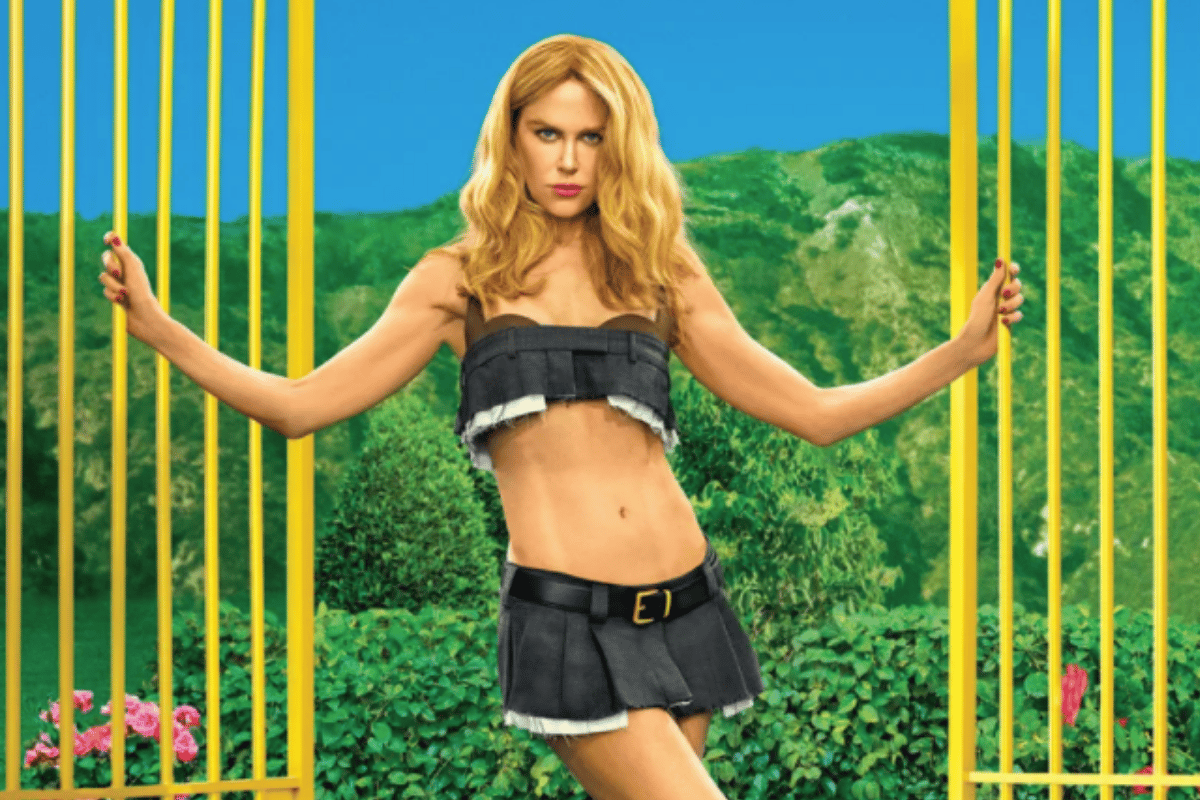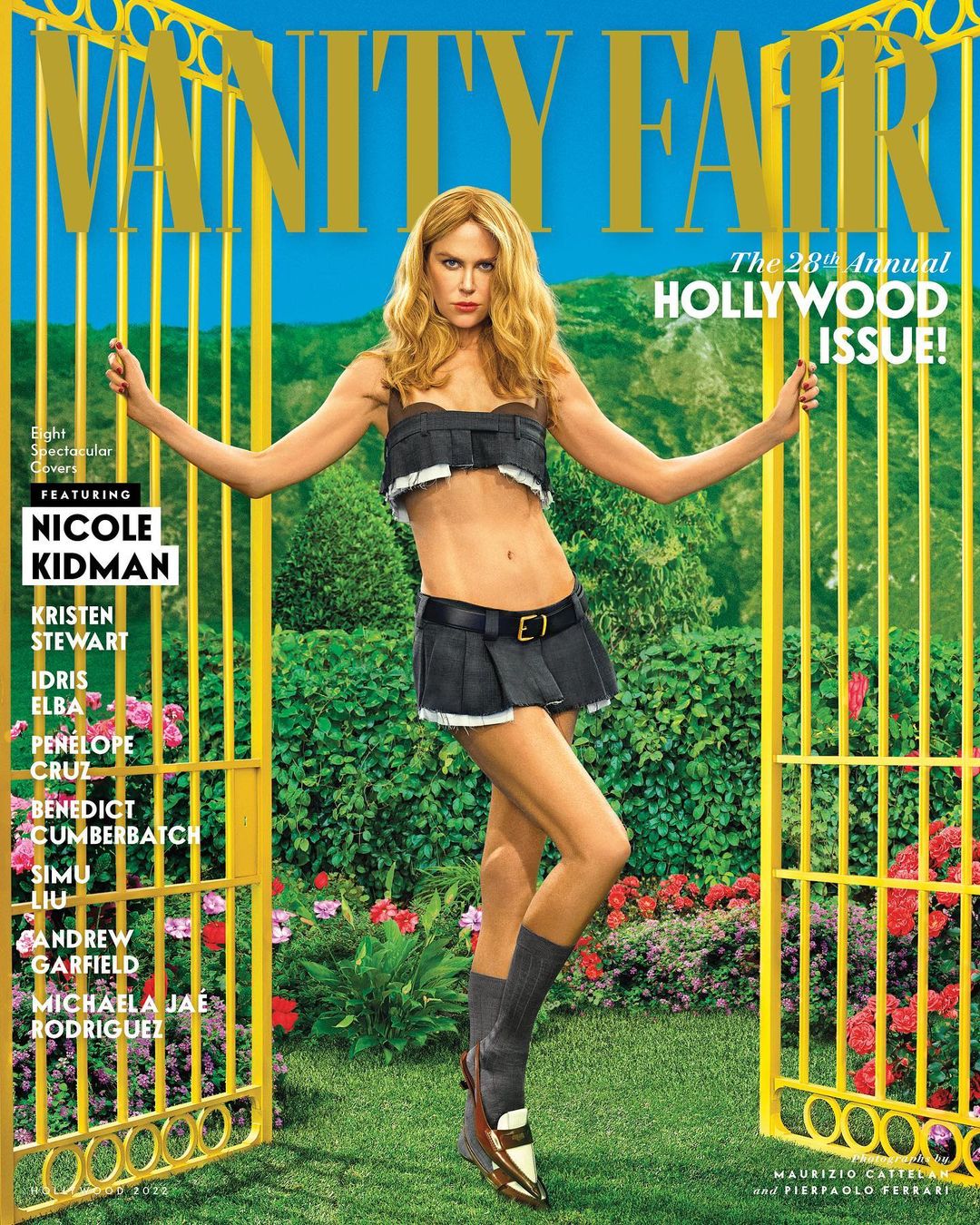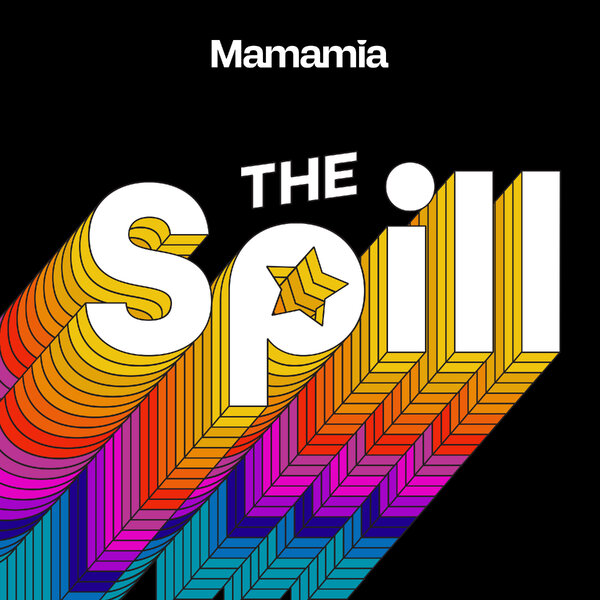
Nicole Kidman, arguably one of the greatest actors of her generation has been nominated for her second Oscar. This is a huge deal. The pinnacle of achievement in acting.
The nomination is for her role as Lucille Ball in the biopic Meet The Ricardos, a performance being hailed by some as the best work of her career. I agree. Loved the film. Loved her in it.
And yet this week, nobody is talking about Nicole Kidman’s work, her movie or even her nomination. What everyone is talking about are her abs and I want to scream. Not at Nicole, although maybe a little bit at Nicole.
On the Internet and in WhatsApp groups across the world right now, there are millions of people talking about Nicole’s abs, reading think pieces about Nicole’s abs and clicking on images of that cover so they can get a better look at Nicole’s abs to see what all the fuss is about.
.jpg?alt=media&token=c0045b5c-0521-4ade-95ec-4acae156f393) Image: supplied
Image: suppliedThese people (myself among them, obviously) are not what’s making me want to scream.
Because to anyone who claims, “you are the problem because you’re the one focussing on her body and not her body of work” I say, stop gaslighting me.
Stop telling me that the point of this cover, this photo, is to highlight Nicole Kidman’s work.
Stop telling me that it’s subversive to show a 54-year-old woman dressed like a schoolgirl.
Stop telling me that this is just what Nicole Kidman’s abs look like and why shouldn’t she wear whatever she wants and isn’t that feminism?
No, actually, that has very little - if anything - to do with feminism.
And I’ll say it again: stop gaslighting women. Stop telling us we are the problem for talking about this.
Before I continue, let’s clear a couple of things up.
Firstly, I accept that despite the highly stylised, almost animated style of this shoot and the inevitable retouching on top of lighting, filters etc, Nicole Kidman’s body really does look like that. Secondly, I will always defend a women’s right to wear whatever she wants. I’m not the Taliban. I am not against women wearing belt-skirts or bra-tops or knee-high socks so they resemble school girls.
But as women, every choice we make about our appearance from bras to Botox, is made within a societal context even if we don’t realise it.
 Image: Vanity Fair In Hollywood, the fashion industry and inside many of our heads, that context is this: the optimum beauty standard for women is very tall, very thin, very young, very light-skinned and very sexy. Regardless of your actual age or how you actually look IRL. That’s what filters, retouching, cosmetic surgery, beauty products and hair extensions are for. So that we can all still cram ourselves into that oppressive, tiny box marked ‘desirable woman’.
Image: Vanity Fair In Hollywood, the fashion industry and inside many of our heads, that context is this: the optimum beauty standard for women is very tall, very thin, very young, very light-skinned and very sexy. Regardless of your actual age or how you actually look IRL. That’s what filters, retouching, cosmetic surgery, beauty products and hair extensions are for. So that we can all still cram ourselves into that oppressive, tiny box marked ‘desirable woman’.
And stop telling me that it’s ‘progress’ when women over 50 are ‘still’ considered sexy.
Because I am utterly exhausted by being sold objectification dressed up as feminist progress.
Stop it.
And I’m exhausted by women with power who participate in their own objectification because they are part of a system that rewards and demands it. This is not good for women even if it benefits that individual woman in that particular moment.
Is a 54-year-old woman dressed like a teenage extra on the film clip of Baby One More Time better than a 22-year-old dressed like that? Is the fact that Nicole Kidman is an actor not a model a win for the representation of women because she has a job that requires her to do something other than silently smile at a camera or walk down a runway?
Mate, if that’s how low the bar of progress is for women then I’d like to speak to the manager.
Which brings us to Nicole’s role in this. How much of this is on her?
Well, it’s complicated, as are my feelings about her complicity.
This week, I’ve read many people claim that it’s the stylist, the photographer and the magazine who decide on the concept for shoots like this and that the celebrities have no say.
This is not true.
I’ve been on countless shoots with models and celebrities and the power dynamics are very different. A model gets no say in what she wears on a shoot or how she is portrayed. She is not paid to have opinions. She is not hired for who she is or what she thinks but rather how she looks. Celebrities are different. Especially an A-lister like Nicole. She would never have to wear anything or be portrayed in a way she doesn’t like. She has a lot of autonomy, a lot of power and a lot of control on a shoot like this.
Some context.
Any time a celebrity is photographed or interviewed in the media, it is a business transaction. The media brand benefits from the attention the celebrity brings and the celebrity benefits from the publicity it generates.
The power balance at a shoot like this falls somewhere on a spectrum depending on who wants it the most - that’s the party with the least power.
Usually, the celebrity is contractually obligated to do interviews and shoots to promote their projects - movies, albums, ad campaigns, product launches. It’s part of what they’re paid the big bucks for.
But in many cases, the celebrity very much wants to be interviewed and photographed because they need people to watch their show, stream their music or buy their products.
The more successful each project is, the higher their future fee and the more opportunities will come to them. For both parties, it’s about making money and building influence. It’s a highly transactional exchange.
Vanity Fair has lost a huge amount of influence over the past 20 years because like all magazines, it’s been disrupted by the Internet. It’s a brand that has little relevance to a new generation. This particular ‘Hollywood’ Issue, however, still carries weight in the entertainment industry. It comes out every year during awards season and is seen as an anointing of the actors who are red hot right now.
For Nicole - this cover is a key part of her Oscar campaign. Just like an election, when you are nominated for an Oscar, you have to actively campaign if you want any chance of winning.
There is no shame in wanting recognition for your work and certainly no shame in being an ambitious woman who wants an Oscar.
To be clear, this is not the ‘fault’ of any individual. Not Nicole, not the stylist not the editor. All of those people were making calculated decisions based on this sad truth: they knew the best way to get attention in our culture is to use a sexualised female body that conforms to the narrow, oppressive beauty standards that make the internal lives of all women incalculably worse.
To then try to somehow dress that decision up as feminism or empowerment or subversion of those same beauty standards? That’s disingenuous at best, manipulative at worst.
In an article published this week entitled 'Grace Tame, TikTok and the emergence of feminism’s Fourth Wave', 29-year-old feminist Tilly Lawless, who has 50,000 Instagram followers, admits, “If I want something important to be read, I have to post a semi-nude photo."
And this, friends, is why I want to scream.
Oh, and does anyone remember the name of Nicole Kidman’s movie?
Feature Image: Vanity Fair






























































































